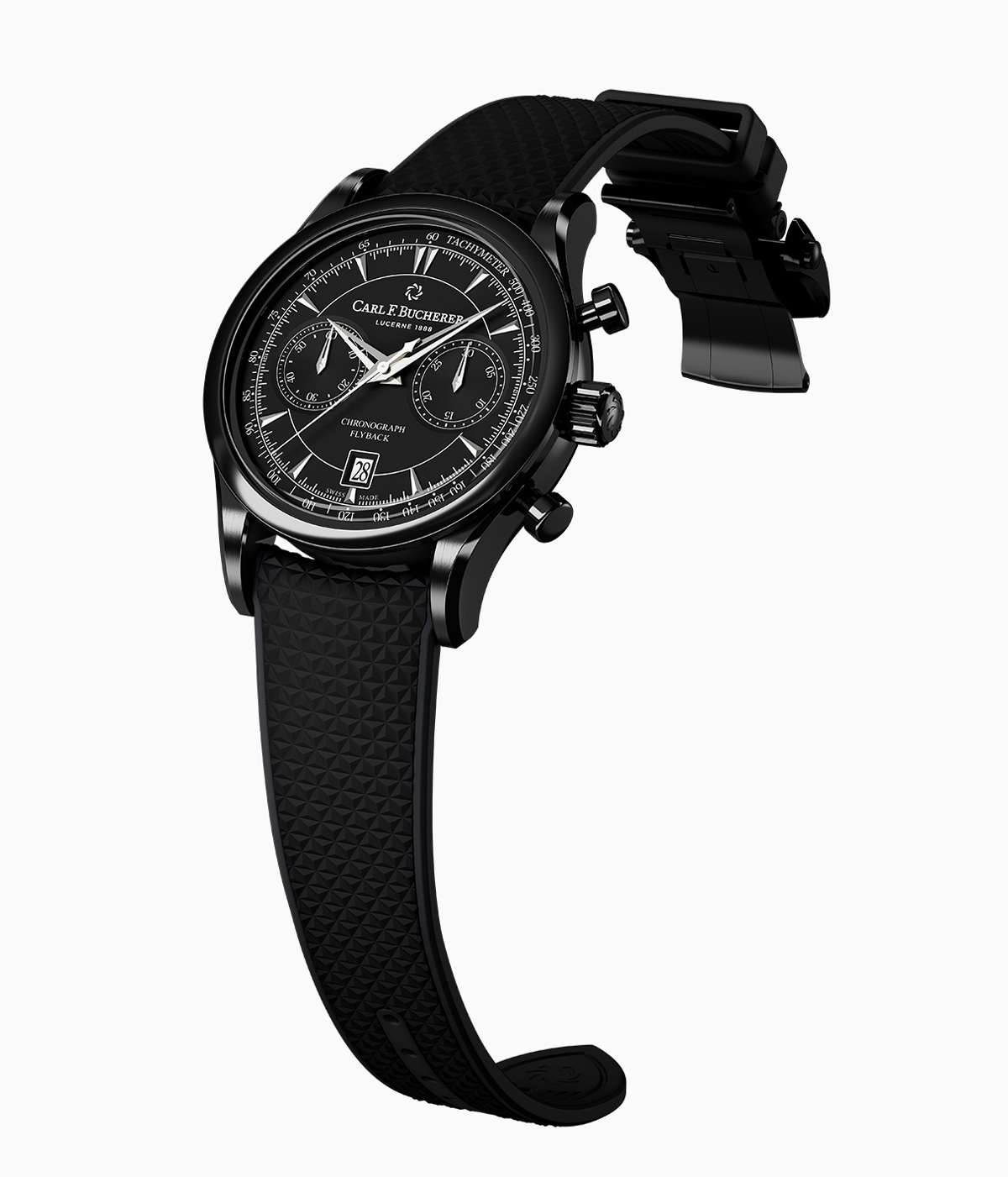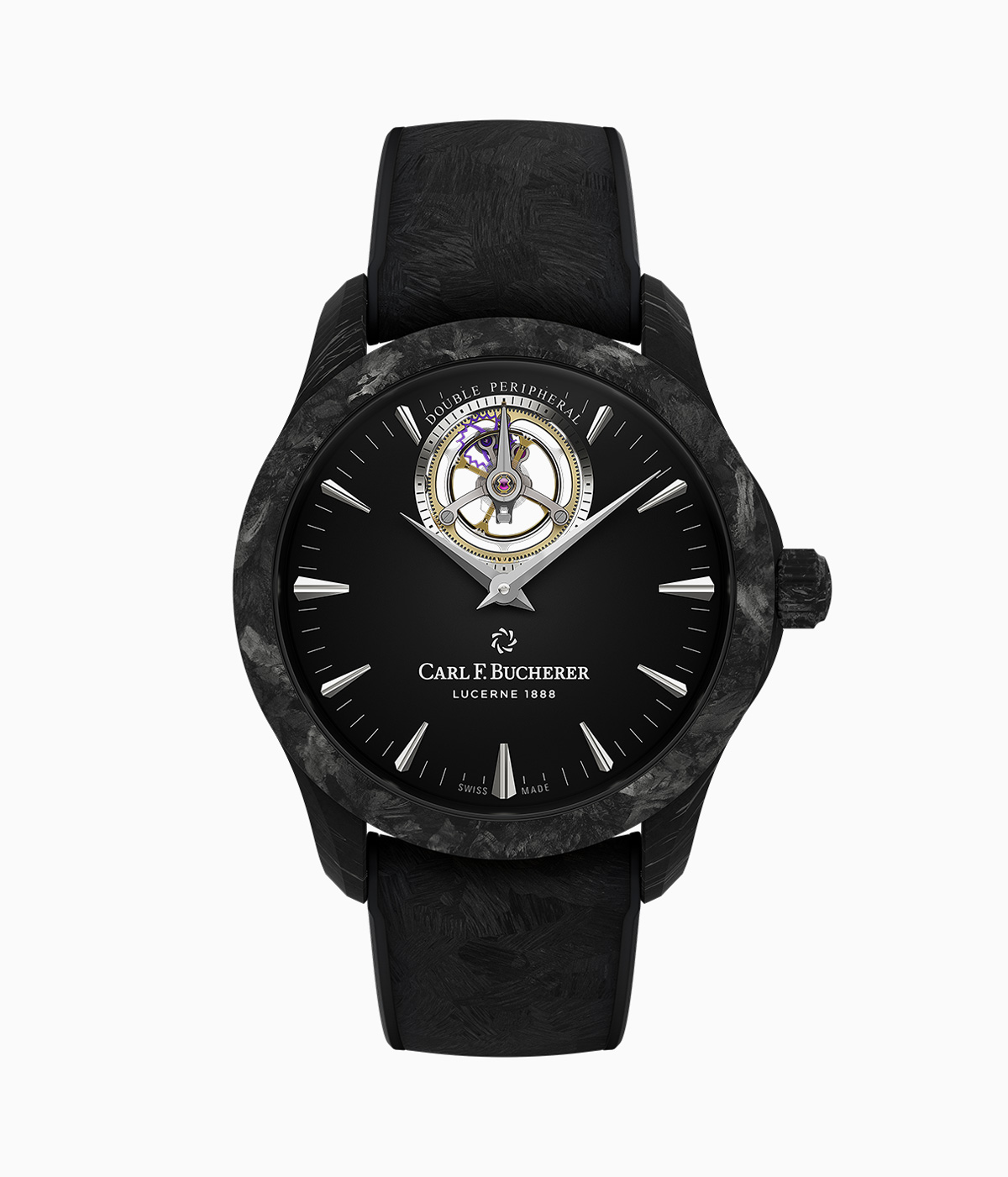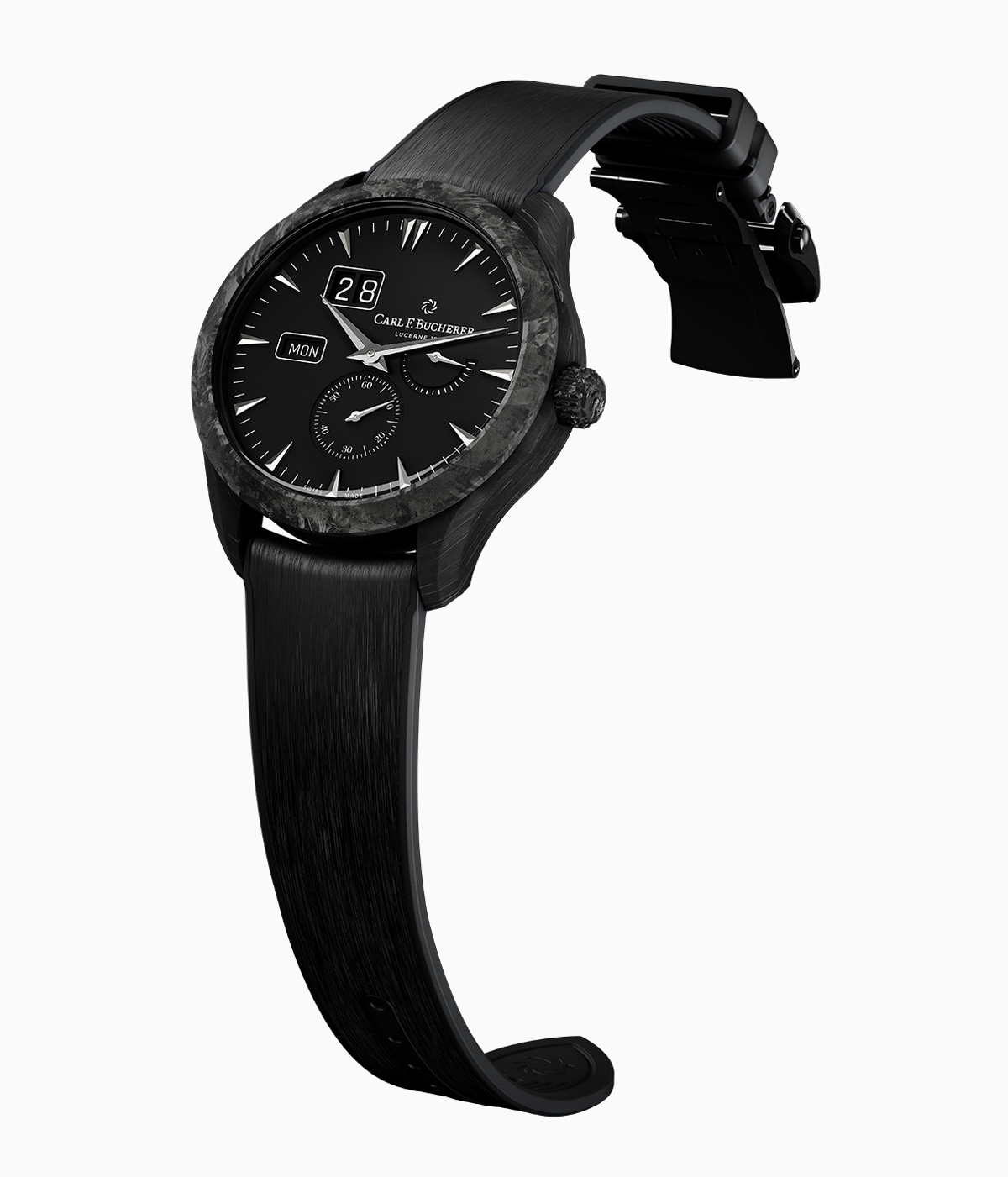
An all-black aesthetic signals a change in direction for Swiss watchmaker Carl F. Bucherer, who is marking its 135th anniversary with a new capsule collection.
Each of the five watches that make up the capsule collection offers a modern reinterpretation of a previous bestseller. ‘The most obvious uniform design code is the pure-black colourways of the five watches – which covers cases, dials and straps,’ says Samir Merdanovic, chief technology officer at Carl F Bucherer. ‘In terms of materials, three have cases in forged carbon, which has a distinct, tactile appearance, but the two with diamond-like-carbon-coated steel, both with brushed and polished facets, complement them perfectly – they’re clearly siblings.'
All-black watches from Carl F Bucherer

‘Each has a black matte lacquered dial, with smaller sub-dials also in black, and each dial is home to rhodium-plated wedge hands and rhodium-plated index marks (with the exception of one watch, which has numerals in white). All have transparent case-backs so you can see the movements. And all five have hybrid rubber straps, with subtly different moulded finishes, which also helps the collection feel more modern. You’ll always see our branding with our name spelled out in full, locked-up with our energy star motif. Together, the design codes of the Carl F Bucherer Capsule Collection represent how we’re embracing a bolder, more contemporary aesthetic and more fashion-forward mindset.’

The watches mark the first time the brand has created forged carbon and carbon-coated steel cases, with three of the five watches also containing in-house movements.
‘In a collection like this, less is more,’ Merdanovic adds. ‘While the watches are certainly bold, they remain somehow subtle. We never wanted to create a collection that stood out for the wrong reasons, and we always have to remember we are a family-owned, Swiss brand with a 135-year history, so we are careful never to undermine respect for that heritage. For example, the forged carbon is fascinating; it demands to be touched, but it’s also subtle. We are also supremely proud of the intricacy and technological advantages of our peripherally mounted complications, but they’re integrated sensitively, quietly. In that respect, there’s no conflict between being technically impressive, or bold from a material perspective and yet cleanly minimalist – it’s what Carl F Bucherer is all about.’








